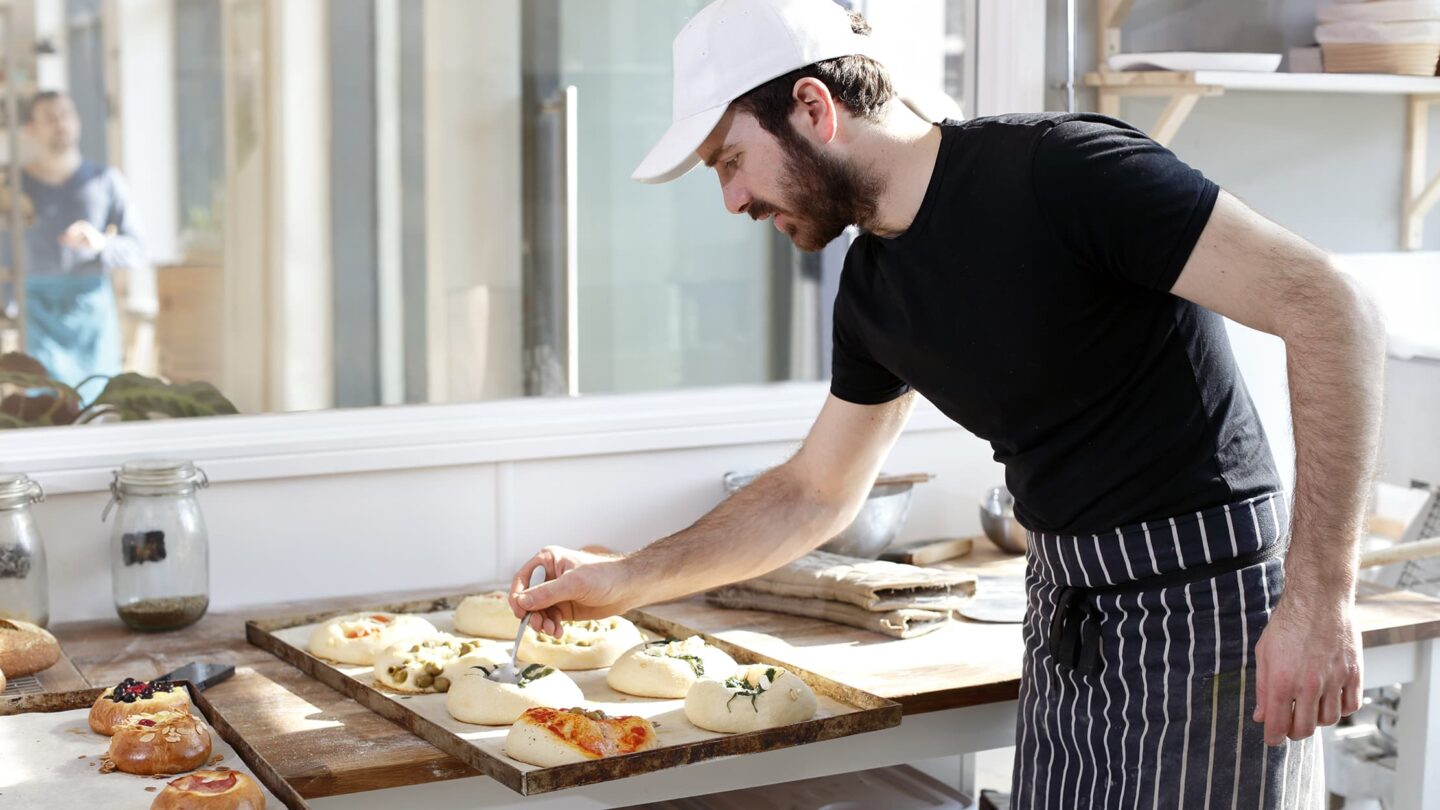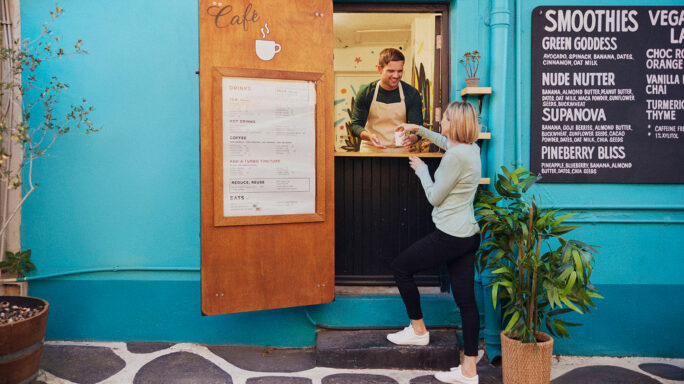Money Matters
Understanding profit margins for restaurants
In this article, we’ll help you to understand profit margins for restaurants, so you can apply the learnings to your business.

If you’re serious about opening and running your own restaurant, you need to be thinking about revenue and profit margins early on in the game.
Restaurant profit margins are relatively slim compared to other sectors. But there are ways for you to bolster your business and make sure it doesn’t just survive but thrive.
In this article, we’ll help you to understand profit margins for restaurants, so you can apply the learnings to your business.
Here’s what we cover:
- Understanding restaurant profit margins and how to stay profitable
- The average profit margin for restaurants
- What is the average net profit margin for restaurants in the US?
- But how much do restaurants actually make?
- How to improve profit margins for restaurants: Minimize costs and increase revenue
Understanding restaurant profit margins and how to stay profitable
First thing’s first: what are profit margins exactly?
Simply put, this is the amount by which your revenue—the money you’ve made—tops your overall costs as a business.
Profit margins form an important part of your restaurant business plan, particularly when it comes to your menu and financial projections.
This is because they give you insights into how much you need to charge per dish, how many covers you need to make per day, the size of your menu, and so on.
There’s no hard and fast rule about how high your margins need to be to make it in this industry.
But as a successful restaurateur, you need to have these numbers at your fingertips to have a truly comprehensive view of your operations and make informed decisions.
Read on to find out how to calculate your profit margins, and what steps you need to take to increase revenue and minimize costs for your restaurant.
The average profit margin for restaurants
The average profit margin for the restaurant industry is around 2-6% globally, with data points that can range from 0 to 15%.
Translation: there’s no 1-size-fits-all answer, primarily because revenue and expenses can vary so significantly between countries and, for example, fast food restaurants and Michelin-star venues.
It also depends on the day-to-day running costs, rent, utilities and so on in your area, and how well you manage your finances as a business owner.
What is the average net profit margin for restaurants in the US?
Restaurant expenses range from rent and utilities to payroll, maintenance, marketing, software, licensing, and admin.
So keeping on top of your cash flow and making sure your profit margins are thick enough for your business to succeed is key.
As we’ve just mentioned, profit margins for restaurants vary depending on the kind of business you’re running, and how you run it.
The bottom line is that costs in the restaurant industry are higher than most. Pair that with the fact that pricing in the sector is highly competitive and it comes as no surprise that margins seem relatively low.
Cafés, for example, see profit margins as high as 20%, while high-end catering companies can see margins of around 15%.
Small Business Survival Toolkit
A practical guide with easy to use templates to help your new business start, survive and thrive.

But how much do restaurants actually make?
We’ve already touched on the fact that your restaurant’s annual turnover depends on a number of variables, so it’s difficult to nail down a realistic figure, particularly when you’re the new kid on the block.
That being said, the overall numbers for restaurants or food-service businesses in the US are encouraging despite the challenges faced during the pandemic.
According to the NDP Group, 2021 saw a steady recovery from the pandemic, with restaurant attendance overall returning to pre-pandemic levels.
While still not back above pre-pandemic levels, quick-service restaurants, which account for 81% of restaurant visits in the U.S., realized a gain of +15% in 2021.
And although slightly down overall, compared to pre-pandemic levels, dine-in, (or on-premises), visits to full-service restaurants increased by +214% in 2021, compared to a decline of -80% in 2020.
According to the Economic Research Services at the US Department of Agriculture, in 2021 full-service and fast-food restaurants—the 2 largest segments of the commercial food service market—accounted for about 70.5% of all food-away-from-home sales.
That’s still an impressive sign of recovery considering the unique challenges faced by the sector as a result of the pandemic and rising cost of food.
The US Government created “The American Rescue Plan Act of 2021 (ARPA)” that provided funding to help small-business restaurants continue trading despite any revenue losses caused by the pandemic. $5 billion of which was allocated to the restaurants whose gross earnings were less than $500,00.
As more people are vaccinated and restrictions continue to ease, we can expect numbers to continue to grow as the country regains economic stability.
How to calculate profit margin for your restaurant business
When it comes to calculating profit margins for your restaurant, there are 2 types you need to know about: gross profit and net profit margins, respectively.
Restaurant gross profit is what remains after you’ve deducted all the costs of goods sold (CoGS) and is particularly useful when it comes to measuring the day-to-day efficiency of your business.
However, it doesn’t factor in things such as running costs, making it just part of a wider, more detailed picture.
And that’s where your net profit comes in.
Gross profit margin
To calculate your gross profit margin, use this formula:
(Selling price – CoGS) / Selling price = Gross profit
Gross profit x 100 = Gross profit margin in %
So, if you’re selling a main course for $18, and it costs $6 to make, here’s how that calculation would look in action:
$18 – $6 = $12
12/18 = 0.67
0.67 x 100 = 67% Gross profit margin
Net profit margin
Next up, your net profit margins.
This is the best way to check on the overall profitability and success of your establishment.
Simply put, you need to deduct the costs of running your restaurant from the total revenue. Those costs include anything from supplier invoices to payroll, rent, utilities, taxes, and so on:
Total revenue – Total expenses* = Net profit
(Net profit / Revenue) x 100 = Net profit margin
*Total expenses = CoGS plus the costs of running your restaurant as detailed above.
And to put that into practice, say your revenue for last month was $100,000, with expenses of $60,000:
$100,000 – $60,000 = $40,000
$40,000/$100,000 = 0.4
0.4 x 100 = 40% Net profit margin
Small Business Survival Toolkit
A practical guide with easy to use templates to help your new business start, survive and thrive.

So, how much do restaurant owners make?
According to Glassdoor, the average salary for a restaurant owner in the US is $60,659.
From broken equipment to faulty plumbing, missing inventory and beyond, unexpected costs are a fact of life when you work in this industry.
Your early days as a restaurant owner can feel overwhelming at times but there are ways to prepare and account for these financial road bumps and make sure you still pay yourself a decent salary.
And remember, if this is your first year in business, your expectations for salary and turnover need to reflect that if you’re going to reap the rewards in the long term.
How to improve profit margins for restaurants: Minimize costs and increase revenue
Shoring up your profit margins is about more than the way you price your food and drink offering and keeping an eye on your profit and loss account.
Here are a few top tips for boosting revenue and cutting down on unnecessary costs.
Tips for increasing restaurant revenue
Ecommerce
Over the past year, restaurants and cafes across the country have kicked their ecommerce plans into overdrive.
Some venues ramped up their existing online offering, while others, such as coffee chain PJ’s Coffee, pivoted their operations during the pandemic to make ordering via mobile easy, allowing guests to “order, pay, customize their favorite products, earn rewards, and find their nearest PJ’s Coffee locations all from a few clicks on their device,” according to Ryan J. Stansbury, its CFE and Vice-President.
How could you follow suit?
Consider creating a smaller menu for deliveries and collection, and maybe even branded merchandise that give customers the opportunity to enjoy your unique flavours at home.
Take Dishoom, for example. The popular chain has an online store where customers can buy meal kits to help recreate their favorite meals at home, as well as cocktail kits, and their iconic cookbook.
Loyalty programme
Consider setting up a loyalty programme to encourage customers to keep coming back, especially in your early days in business.
You could offer anything from exclusive discounts and promotions to a freebie with every tenth meal.
The choice is yours and your customers will thank you for it.
Evaluate your menu
When you’re planning your menu, take a quality over quantity approach.
While it’s important to offer your customers a good range of options, and cater for different dietary requirements, having too many items on the menu can be overwhelming to diners and staff alike.
On top of that, you’ll find yourself spending money on huge amounts of food that will likely expire before you get a chance to use it, which is essentially like throwing money in the bin.
Review your menu regularly to figure out what works, what doesn’t, and what you should try next to keep customers coming back for more.
Upgrade your POS
A modern, cloud-based point of sale (POS) does more than simply process payments or organize reservations.
Tap into your POS to dig into all your restaurants’ most important insights and use that data to run your business more effectively.
It will help you ensure you’re getting more out of every dollar and cent.
Rethink your floor plan
Get creative with the way you use your space.
The number of covers you can accommodate every day can make a huge difference to your bottom line, so it’s worth spending time on your floor plan, making the most of what you’ve got.
With coronavirus restrictions in place, restaurants and cafes all over North America have had to get creative with their floorplans, finding a healthy balance between public safety and making enough covers daily to keep doors open.
Get social
Are you making the most of social media to boost your business?
When it comes to advertising, you need to be where your customers can see you. And chances are, 99% of your target market are on social media platforms such as Instagram, Facebook, and TikTok.
Create profiles on the platforms that your customers are using and post regular updates about your restaurant, including tantalizing photos of your dishes and snaps of your friendly staff to give a face to your business.
And don’t worry about trying to have a presence on all of them–focusing on 1 or 2, at least to start with, is a good approach. And that way, you won’t be too stretched.
Most social media platforms today favor video content, or are entirely video-based, so consider creating quick videos of staff doing their thing, your best dishes coming together, or sharing some pro kitchen tips people can try at home.
If you don’t have a Google My Business listing yet, go ahead and get that sorted first.
This is a free Google profile you can set up which will make your restaurant easier for people to find. It also provides key information such as location, opening hours, and reviews, which you can also ask satisfied customers to leave as part of your social marketing plan.
Tips for minimizing costs
Reduce cost of goods sold
When planning your menu, take CoGS into account to keep quality high without sacrificing your profit margins.
You don’t have to go for lower-quality ingredients to do this. Simply shop around and get quotes from different vendors to find the best deal before signing on the dotted line.
Ensuring you have accurate inventory numbers is also central to keeping these costs down while reducing food waste, which is a huge issue in the food and drink industry today.
Reduce waste
Staying on top of your inventory is just one part of the banquet that is your business.
Make sure you’re serving up the right portion sizes for each course.
While some customers will thank you for a large portion of their favourite dish, more often than not you’ll just end up with more food being thrown out and wasted at your expense.
Review your menu regularly to find out what’s not selling and let your food orders reflect that.
If your original-recipe Wagyu burgers are not working for this demographic, cut them from the menu and stop letting valuable stock go to waste and eat into your bottom line.
Decrease staff turnover
Hiring and training new employees takes time and money, so keeping staff turnover to a minimum is key.
This is a competitive industry, and having a great server or in-demand chef on side can be what brings in that all-important repeat business.
Invest in regular training for your staff so everyone stays sharp and feels motivated to continue developing their skills.
Make sure you pay your people a fair wage and, if you can, offer an attractive benefits package to keep your team feeling happy and appreciated.
In line with that, remember to take the time to celebrate success and give shout-outs to individuals when you see exceptional work being done, or notice employees going above and beyond to offer great service.
On the flipside of that, it’s worth working with your restaurant manager to get processes in place to handle sub-standard performance and address issues before they become a bigger problem.
For example, if a member of staff is consistently late, texting on the job, and not offering the right kind of customer service, what will you do to resolve that?
You might opt for a formal 3-strike warning system, or arrange 1-on-1 time to talk to that employee and work out a plan to improve their performance together.
The key is finding what works for your business.
Final thoughts: Preparation is key
In the kitchen it really is all about nailing that prep time—and it’s no different when it comes to the financial side of your business.
Good planning and preparation are the key to making sure you stay in profit, with thick enough margins to continue nurturing your business and maybe even expanding your operations.
From estimating figures for your business plan to figuring out which suppliers to use, what to serve, who to hire, and beyond, there’s no detail too small to consider when you’re running your own restaurant.







Ask the author a question or share your advice